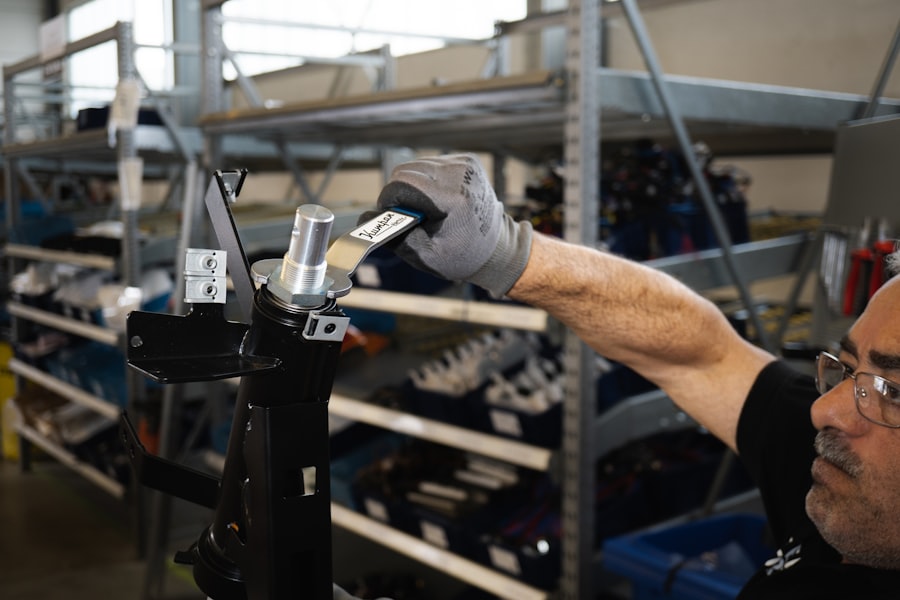When it comes to dressing up your windows, choosing the right valance or cornice board can make all the difference. I’ve always found that these decorative elements not only enhance the aesthetic appeal of a room but also serve practical purposes, such as hiding curtain rods or providing a finished look to your window treatments. The first step in this process is to consider the style of your space.
Are you going for a modern, minimalist vibe, or do you prefer something more traditional and ornate? The material and color of the valance or cornice board should complement your existing decor. For instance, a wooden cornice board can add warmth and texture to a room, while a fabric valance can introduce softness and color.
Another important factor to consider is the function of the valance or cornice board. If you’re looking to block out light or add privacy, a thicker fabric valance might be the way to go. On the other hand, if you simply want to add a decorative touch without altering the light flow, a sheer fabric could be perfect.
I’ve often found that mixing and matching different materials can create a unique look that reflects my personal style. Don’t forget to think about the length and width as well; a well-proportioned valance or cornice board can dramatically change the perception of window size and height.
Key Takeaways
- When selecting a valance or cornice board, consider the style of your room and the size of your window for the best fit.
- Accurate measurements of the window are crucial for a proper fit, so be sure to measure both the width and height of the window.
- Proper installation of mounting hardware is essential for the stability and longevity of the valance or cornice board.
- When attaching the valance or cornice board, ensure it is centered and level for a polished look.
- To secure the valance or cornice board, use appropriate screws and anchors to prevent it from falling.
Measuring the Window
Once I’ve settled on the style of valance or cornice board I want, the next step is measuring the window accurately. This part is crucial because even the most beautiful valance won’t look right if it’s not the correct size. I usually start by measuring the width of the window frame.
It’s important to measure from one side of the frame to the other, taking note of any obstructions like window handles or trim that might affect how the valance hangs. I like to add a few extra inches on each side for a more dramatic effect; this helps create an illusion of a larger window. Next, I measure the height from where I plan to mount the valance or cornice board down to where I want it to end.
This could be just above the window frame or even extending down to cover part of the wall. I find it helpful to visualize how it will look by using painter’s tape to mark where I plan to install it. This way, I can step back and see if the height feels right in relation to my other furnishings.
Taking these measurements carefully ensures that when I finally install my valance or cornice board, it fits perfectly and looks professionally done.
Installing Mounting Hardware

With my measurements in hand, it’s time to move on to installing the mounting hardware. This step is essential for ensuring that my valance or cornice board hangs securely and looks great. I usually start by gathering all my tools: a drill, screws, a level, and a stud finder.
Using a stud finder is particularly important because I want to make sure that my mounting brackets are anchored into something solid. If I can’t find a stud, I’ll use wall anchors to provide extra support. Once I’ve located where I want to install the brackets, I mark the spots with a pencil.
I always double-check that my marks are level; nothing looks worse than a crooked valance! After drilling pilot holes for my screws, I attach the brackets securely. It’s important to follow the manufacturer’s instructions for spacing and placement, as this can vary depending on the type of valance or cornice board I’m using.
Taking my time during this step pays off in the end when everything is aligned perfectly.
Attaching the Valance or Cornice Board
Now comes one of my favorite parts: attaching the valance or cornice board itself! With the mounting hardware securely in place, I carefully lift my chosen piece into position. Depending on its weight and size, this might require an extra set of hands, so I often enlist a friend or family member for assistance.
It’s always nice to have someone there to help hold things steady while I secure everything in place. Once it’s positioned correctly, I make sure it’s level before fastening it down. If it’s a fabric valance with a rod pocket, I slide the curtain rod through and then attach it to the brackets.
For a cornice board, I typically use screws or brackets that came with it for secure attachment. This is also when I take a moment to step back and admire how it looks against my window; seeing it come together is always rewarding! If everything looks good, I tighten all screws and ensure that it feels sturdy.
Securing the Valance or Cornice Board
After attaching my valance or cornice board, securing it properly is crucial for longevity and stability. Depending on what type of mounting hardware I used, this could involve tightening screws or ensuring that any clips are firmly in place. If I’m using a fabric valance with a rod pocket, I’ll double-check that the rod is securely fastened within its brackets so that it doesn’t sag over time.
I also like to give everything a gentle tug just to make sure it’s all secure. If there are any signs of wobbling or instability, I’ll go back and reinforce those areas as needed. It’s better to address any issues now rather than wait until later when it might be more difficult to fix.
Once everything feels solid, I can relax knowing that my beautiful new window treatment is ready to shine!
Adding Finishing Touches

Layering for Depth and Texture
Sometimes, I’ll even consider layering additional window treatments like curtains or blinds for added depth and texture. The combination of different materials can create an inviting atmosphere that feels both cozy and stylish.
Final Touches and Cleaning
I also take this opportunity to ensure that everything is clean and free from dust or debris before stepping back to admire my work. A quick wipe-down with a soft cloth can make all the difference in how polished everything looks.
Adding a Touch of Freshness
If I’ve chosen a fabric valance, I might also consider adding some fabric freshener for an extra touch of freshness in the room. These little details can elevate the overall appearance and make my space feel more complete.
Tips for Maintenance and Cleaning
Now that my valance or cornice board is beautifully installed, maintaining its appearance is key to keeping my space looking fresh and inviting. For fabric valances, regular dusting is essential; I often use a soft brush attachment on my vacuum cleaner to gently remove dust without damaging the fabric. If there are any stains or spills, I make sure to treat them promptly according to the care instructions provided by the manufacturer.
For wooden cornice boards, a simple dusting with a microfiber cloth usually does the trick. Occasionally, I’ll use a wood polish to keep it looking shiny and new. It’s important for me to remember that different materials require different care methods; being mindful of this helps prolong their lifespan and keeps them looking their best.
Troubleshooting Common Installation Issues
Even with careful planning and execution, sometimes things don’t go as smoothly as we’d like during installation. One common issue I’ve encountered is misalignment; if my valance or cornice board isn’t level after installation, it can be frustrating! In such cases, I usually take a step back and reassess my mounting hardware placement.
It might require me to loosen screws slightly and adjust until everything looks just right. Another issue could be related to weight distribution; if my valance seems saggy in certain areas, it may indicate that additional support is needed. In these situations, adding extra brackets can help distribute weight more evenly across the length of the valance or cornice board.
It’s all about being patient and willing to make adjustments until everything feels just right. In conclusion, selecting and installing a valance or cornice board can be an enjoyable project that adds character and charm to any room. By taking careful measurements, choosing appropriate materials, and following through with proper installation techniques, I can create a beautiful window treatment that enhances my home’s decor while also being functional.
With regular maintenance and attention to detail, my new addition will continue looking great for years to come!
If you’re interested in learning more about window coverings and interior design, you may want to check out the article on the World Cornice and Pelmet Association’s website about the International Window Coverings Expo 2025 in Palm Beach. This event will showcase the latest trends and innovations in the industry, providing valuable insights for professionals and enthusiasts alike. To read more about the association and their upcoming expo, visit here.
FAQs
What is a valance?
A valance is a decorative fabric treatment that is used to cover the top portion of a window. It can be used alone or in combination with curtains or blinds.
What is a cornice board?
A cornice board is a hard window treatment that is used to cover the top portion of a window. It is typically made of wood or foam and is upholstered with fabric.
What tools are needed to install valances and cornice boards?
The tools needed to install valances and cornice boards typically include a measuring tape, a level, a pencil, a drill, screws, and a screwdriver.
How do you measure for a valance or cornice board?
To measure for a valance or cornice board, you will need to measure the width of the window and the desired height of the treatment. It is important to measure accurately to ensure a proper fit.
What are the steps to install a valance or cornice board?
The steps to install a valance or cornice board typically include measuring the window, marking the placement of the treatment, drilling pilot holes, and then attaching the treatment using screws.
Can valances and cornice boards be installed without professional help?
Yes, valances and cornice boards can be installed without professional help as long as you have the necessary tools and follow the installation instructions carefully. However, if you are unsure or uncomfortable with the process, it is always best to seek professional assistance.



